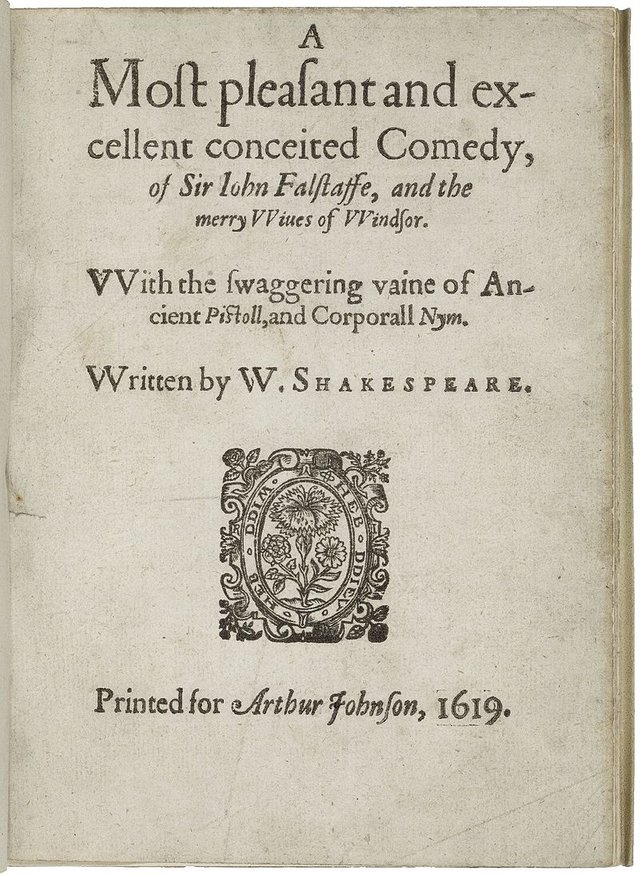An Overview of The Merry Wives of Windsor
It was likely written before 1597. It was first published in 1602 as A Most pleasaunt and excellent conceited Comedie, of Syr John Falstaffe, and the merrie Wives of Windsor.
Synopsis
Sir John Falstaff meets Mrs. Ford and Mrs. Page, two wealthy wives, and imagines that they are interested in him. So, he send duplicate love-letters to the two ladies. Pistol and Nym, two of Falstaff’s former cohorts, decide to inform the husbands.
Meanwhile, Anne, Mrs. Page’s daughter, has three suitors: Slender, Dr. Caius, and Fenton (whom she’s in love with). Each seeks the support of Mrs. Quickly. Dr. Caius discovers that Sir Hugh Evans has sent a letter on Slender’s behalf and challenges Evans to a duel.
The wives compare Falstaff’s letters to them and determine to be revenged on him. Mrs. Ford makes an appointment with him while her husband is out.
However, the husbands have been warned by the cohorts. Page has no doubts about his wife, but Ford is jealous and decides to confront Falstaff disguised as Master Brook.
In the meantime, Dr. Caius and Sir Hugh prepare to duel, but then they make up.
Falstaff arrives for his rendezvous with Mrs. Ford, but they are interrupted by Mrs. Page with word that Mr. Ford is on his way home. The women pile Falstaff into the laundry basket and have him dumped in a muddy ditch. Undeterred, Falstaff makes a second appointment with Mrs. Ford.
But Ford again surprises them. Falstaff decides to flee disguised as Mother Prat, a woman Ford hates. Falstaff is roundly beaten by Ford before escaping. The wives tell their husbands everything, and they all concoct a plot to humiliate Falstaff.
At the same time, the three people concerned in the wooing of Anne Page plan to bring the situation to a close by arranging an elopement.
Wearing a buck’s head, Falstaff arrives in Windsor Park to meet the wives. But he is instead pinched and burned with tapes by townspeople, who are dressed as fairies and other creatures. Each of the suitors runs off with a fairy; each thinks his fairy is actually Anne Page. Finally, Ford, Page, and their wives reveal themselves to Falstaff. And it is discovered that Fenton has married Anne.
Analysis
The Merry Wives of Windsor is unique among Shakespeare’s comedies for being the only one set in an English town. It is perhaps the lightest comedy since there is no threat of death, nothing much is at stake, and no one is left out of the revelry at the conclusion.
Legend has it that Queen Elizabeth the First asked Shakespeare to write a play showing Falstaff in love and that Merry Wives was the result. If so, Shakespeare cheated the queen, because Falstaff is never really in love in this play. He is also never quite himself.
This Falstaff seems almost like an imposter, and some disgruntled critics have called him so. Indeed, the Windsor Falstaff is tame and unresourceful compared with the version in Henry IV. It is hard to believe that the cynical, quick-witted, “real” Sir John would ever have been fooled, much less frightened, by the amateur theatrics of the community members in Windsor Park. But perhaps only Shakespearean scholars and students really worry about all that, because Merry Wives is extremely popular with modern audiences and is frequently performed. Whether or not this Falstaff is the genuine article, he is still a lot of fun.
Performance History
It was among the first Shakespeare plays performed after the theatres reopened in 1660.
In 1702 John Dennis staged a failed adaptation called The Comical Gallant, or the Amours of Sir John Falstaff.
Charles Dickens performed in an 1848 staging at the Theatre Royal Birmingham.
An 1863 production at the Manchester Theatre Royal featured Henry Irving.
In 1940 and 1955, it played at the Shakespeare Memorial Theatre, Stratford-upon-Avon.
The Royal Shakespeare Company put on the play in 1964, 1968, 1979, and 1985. Its last production, in 2006, was a musical version.
References
Outlines of Shakespeare’s Plays, by Homer A. Watt, Karl J. Holzknecht, and Raymond Ross, Barnes & Noble Books, New York, 1969
The Riverside Shakespeare, G. Blakemore Evans (ed.), Houghton Mifflin Company, Princeton, 1974
Shakespeare: The Invention of the Human, by Harold Bloom, Riverhead Books, New York, 1998
Unediting the Renaissance, by Leah S. Marcus, Routledge, New York, 1996
